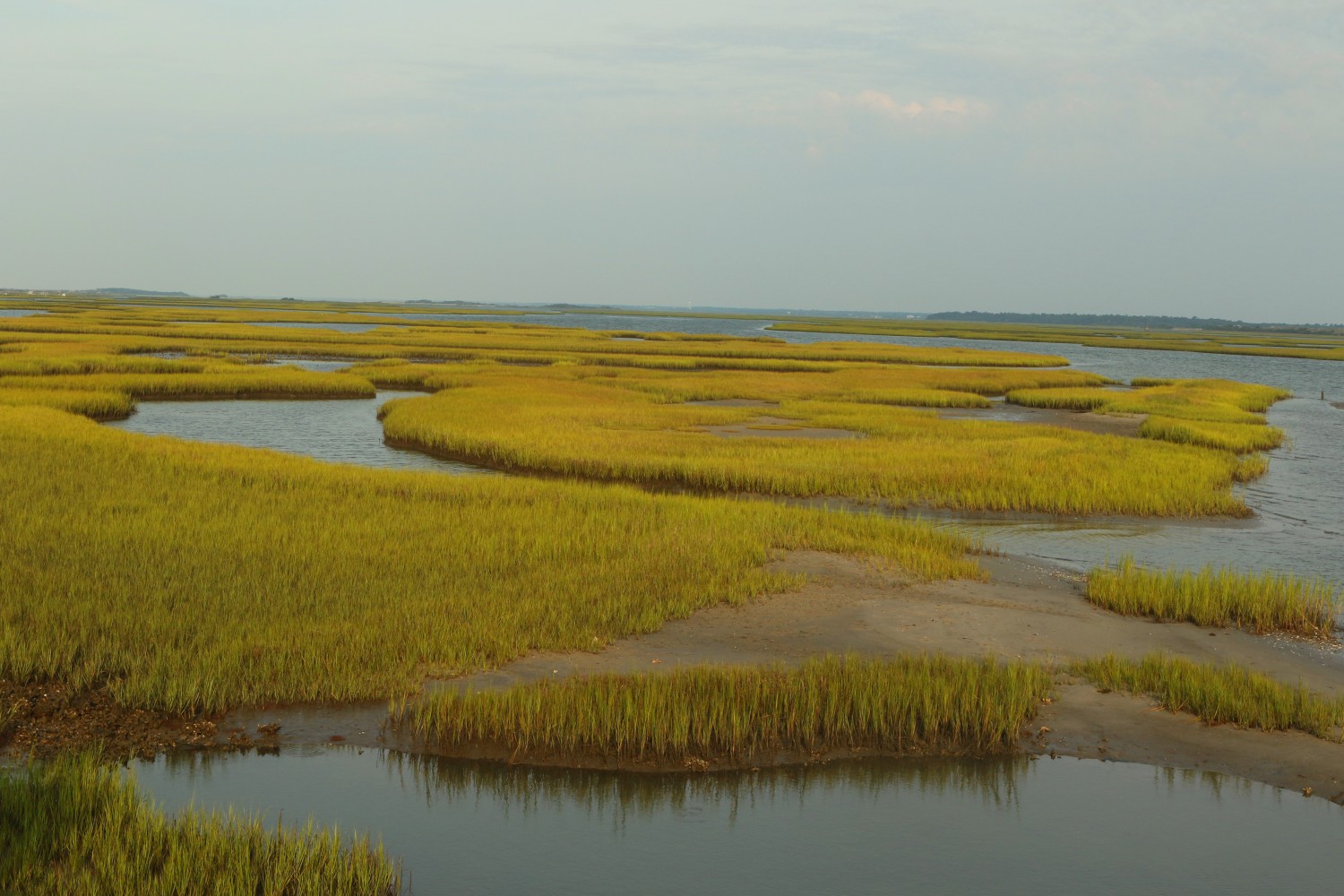North Carolina has one of the largest and most productive estuarine systems in the United States. With around 220,000 acres of salt marshes, our estuaries provide important habitats for fish, help improve water quality, and help protect coastal communities from flooding. In addition, healthy marshes store large amounts of carbon, holding back its release into the atmosphere and aiding in our climate resiliency.
Marsh Program Goals
Implement key actions identified in our newly adopted Salt Marsh Action Plan that establishes strategic goals and benchmarks to maintain their functional productivity as the coast develops and experiences at least a 1.5-foot rise in sea level by 2050.
Conduct salt marsh conservation and restoration projects on a chain of dredge spoil islands in Bogue Sound.
Collaborate and help to provide leadership to the South Atlantic Salt Marsh Initiative, which includes stakeholders and government agencies from North Carolina, South Carolina, Georgia, and the east coast of northern Florida, to obtain expanded federal and state government support for addressing salt marsh migration, restoration, and conservation needs.
Form a North Carolina Coastal Carbon Collaborative that will facilitate the development of salt marsh habitat migration, restoration, and conservation projects to mitigate global warming.
Seek regulatory reforms that assist in the planning, permitting, and construction of more living shorelines to be used to protect public infrastructure and existing land uses.
North Carolina Salt Marsh Action Plan
Like most coastal ecosystems, our marshes are threatened. To ensure a healthy future for these critical marsh systems, the Coastal Federation is leading a partnership to develop the North Carolina Salt Marsh Action Plan that details a five-year strategy to protect, restore, and allow for the migration of salt marshes in coastal North Carolina so that their existing ecological, economic, and cultural functions are not degraded or lost.
The North Carolina Plan is part of a larger South Atlantic Salt Marsh Initiative (SASMI) that was formed in 2021 under the leadership and guidance of The Pew Charitable Trusts and the Southeast Regional Partnership for Planning and Sustainability (SERPPAS). This regional plan prioritizes actions for protecting and restoring nearly 1 million acres of salt marshes along the South Atlantic coast from North Carolina to the Atlantic coast of northern Florida.
The North Carolina Salt Marsh Plan focuses on our state’s marsh resources and will serve as the foundation of the Coastal Federation’s New Marsh Program Goal to Protect and Restore Salt Marshes to Foster Thriving Human and Natural Coastal Communities. This newly formed Program Goal is kicking off this year and will include our dedicated work to protect and create living shorelines, a focus of the Federation since 1997.
Living Shorelines
North Carolina’s 12,000 miles of estuarine shoreline provide some of the most productive habitats in the world for fish and shellfish.
Unfortunately, the erosion of these shorelines is increasing because of rising sea levels, concentrated waves from boats, more extreme storms, and poorly planned development practices. Erosion control structures like bulkheads are not as effective as living shorelines in protecting shorelines. By installing buffers using salt marshes, oyster reefs, and other natural materials, living shorelines control erosion while protecting the natural beauty and productivity of our estuaries.
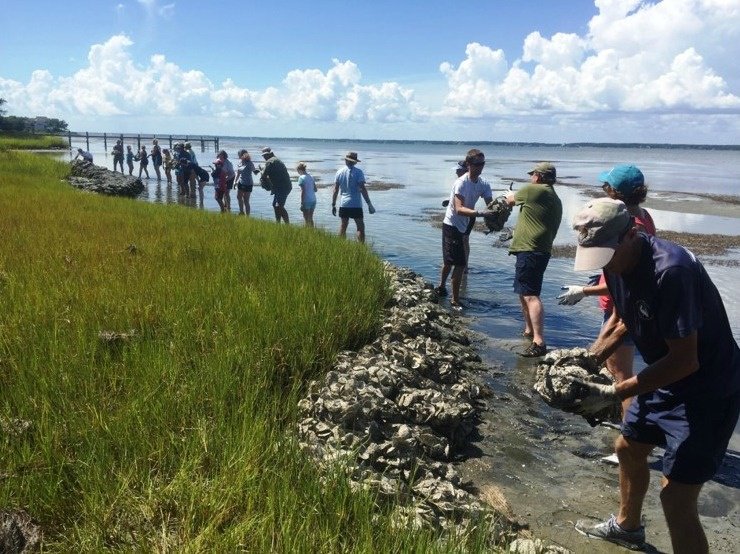
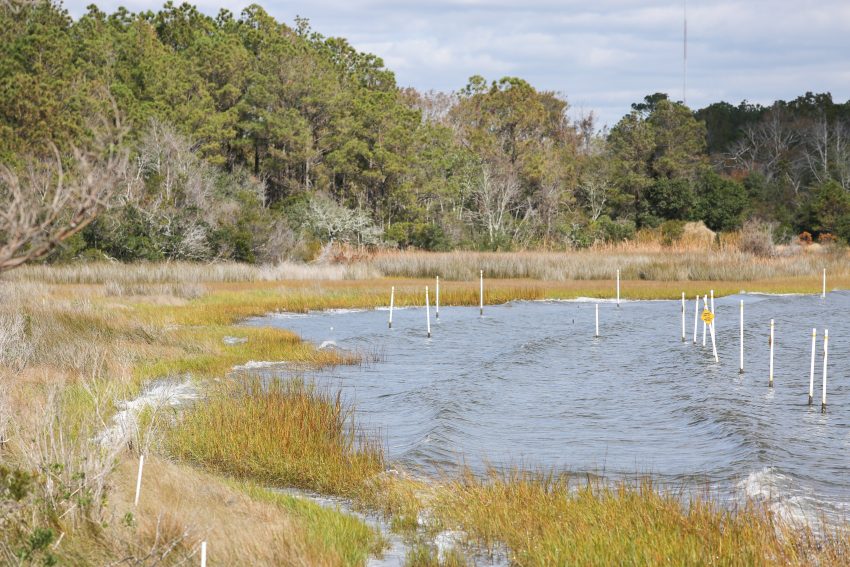
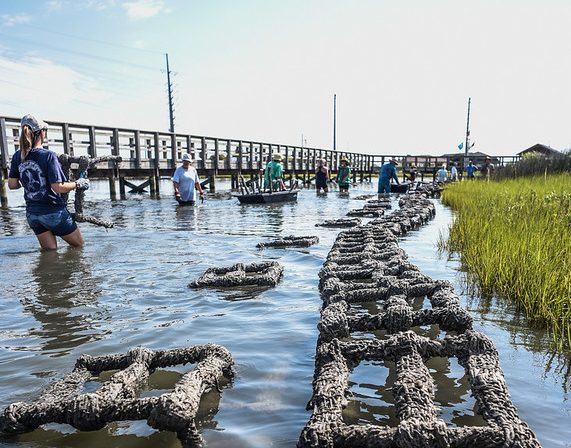
The Coastal Federation remains committed to making living shorelines the go-to approach for managing shoreline erosion. We have secured public and private funding that will help us provide increased financial incentives to landowners for living shorelines.
Blue Carbon Initiative
While many are familiar with the term “blue carbon”, referring to carbon stored in saltwater ecosystems, the Federation advocates for an inclusive “coastal carbon” strategy that recognizes the interconnectedness of North Carolina’s coastal and forested ecosystems. Beyond traditional blue carbon environments like salt marshes and seagrasses, our commitment extends to preserving and restoring carbon in pocosins, peatlands, and terrestrial working lands (farms and forests) for a comprehensive management approach.
We’ve partnered with Pew Charitable Trusts to establish the North Carolina Coastal Carbon Collaborative, a group of public and private stakeholders working to mitigate climate change in North Carolina, with a particular focus on preserving and increasing coastal carbon.
Drawing inspiration from the successful NC Oyster Blueprint, we are developing a Coastal Carbon Blueprint with the support of the Collaborative. The Blueprint aims to make coastal carbon relevant in NC policy and decision-making, raise awareness of the importance of coastal carbon and the co-benefits of protecting and increasing its stocks, and support coastal projects with such co-benefits.
Resources



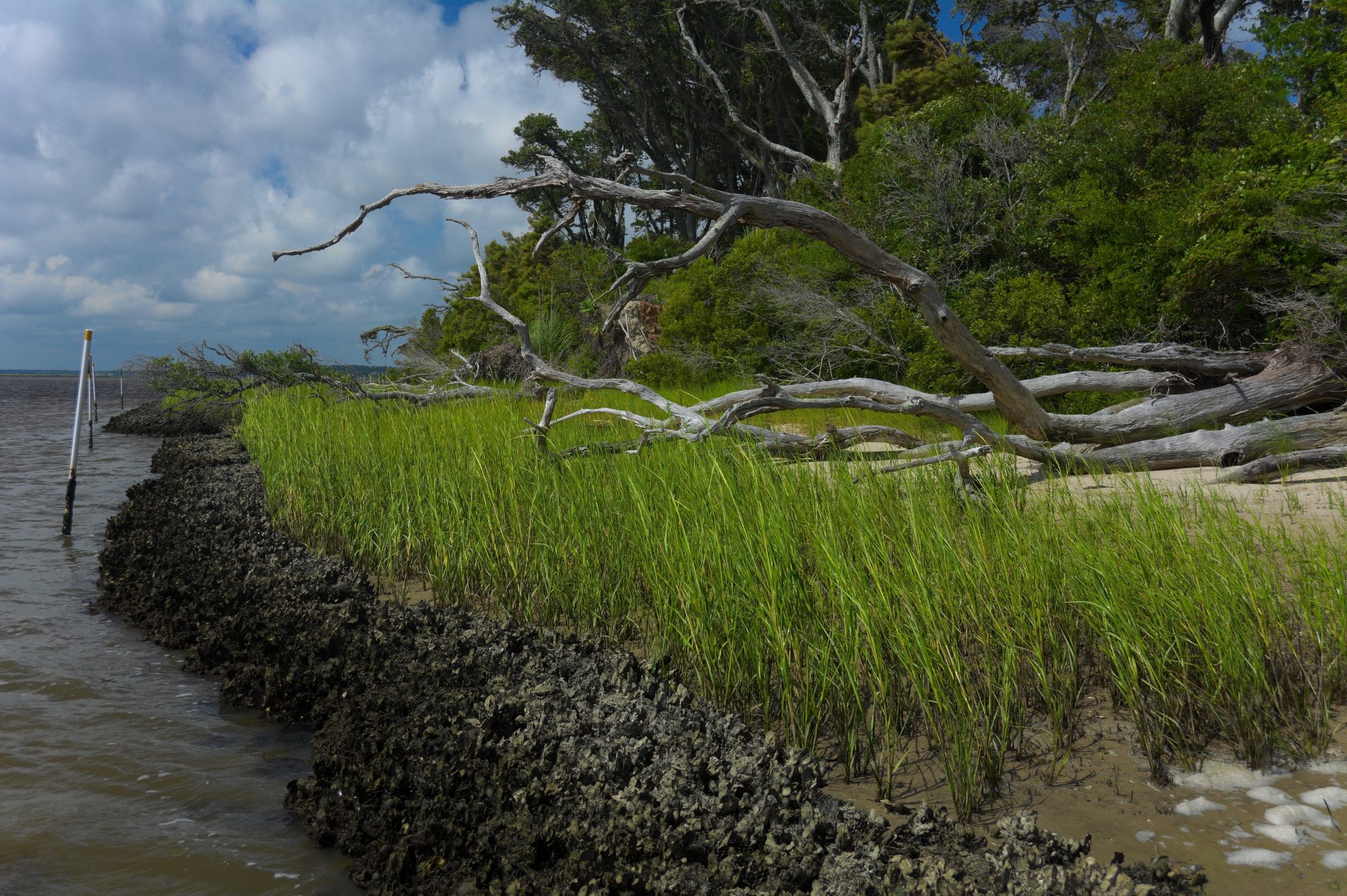
Resilient Shorelines
You can help make a difference for our coast—one living shoreline at a time!

